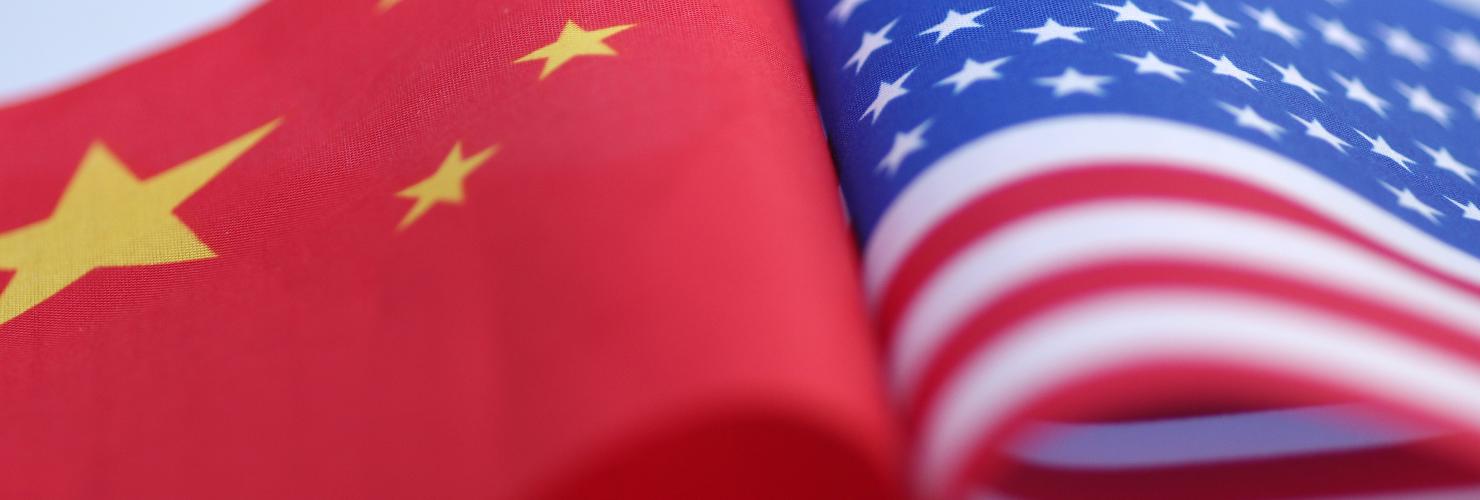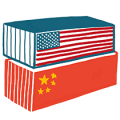

Normalization of Sino-American relations: 40 years later
The normalization of Sino-American relations in 1971 benefited the people on Taiwan and in China, while the Soviet Union and the Chiang Kai-shek government lost out. On various occasions the US decision to normalize relations with China was criticized domestically and internationally. In an article first published by ChinaFile, Jerome A. Cohen, professor at New York University School of Law, says that US government decided for the preferable option of uneasy but stable peace amidst worse choices.
The spirited 2019 New Year’s speeches of Taiwan’s President Tsai Ing-wen and China’s President Xi Jinping have just reminded the world that, 40 years after the normalization of relations between the United States and China, the potentially explosive issue of Taiwan’s status that had long delayed normalization has still not been resolved. President Tsai tenaciously reasserted Taiwan’s determination to remain free and to deal with China on an equal basis. President Xi just as tenaciously reasserted Beijing’s determination to resume China’s sovereignty over the island and to use force, if necessary, to do so. So what were the consequences of normalization?
There were two major “losers” when, after long negotiations, Beijing and Washington finally established diplomatic relations on January 1, 1979. The most apparent was Chiang Kai-shek’s “Republic of China” government, which had fled from the Mainland to Taiwan three decades earlier and maintained its harsh dictatorship over the island after the Generalissimo’s death in 1975. The second big loser was the Soviet Union, which had rightly feared that a Sino-American rapprochement would unfavorably alter the world’s balance of power against Moscow, as it did.
People on Taiwan and in China benefited from the Sino-American normalization
Most people on Taiwan, understandably, were gravely concerned that Sino-American normalization might lead to their unwilling absorption by the People’s Republic of China (P.R.C.), the Communist government many had fled. Yet, they have emerged as clear winners. Instead of continuing to live under the repressive Guomindang (KMT) party-state, a Leninist-type dictatorship that Chiang Kai-shek had brutally imposed upon them, they now enjoy one of the world’s liveliest and most successful democratic governments, one that practices the rule of law, increasingly protects human rights, and enhances their considerable economic prosperity and social progress. To be sure, they continue to confront the threats and pressures of a P.R.C. that is now hugely more powerful than the regime that Deng Xiaoping had just begun to rejuvenate 40 years ago. Nevertheless, buoyed by their own achievements, the continuing assurance of America’s Taiwan Relations Act, and the informal support of many other countries, the people on Taiwan are plainly much better off today than they were in 1979 and than they would have been had Chiang’s KMT not been transformed by events beginning in the late 1980s into a political party now required to compete in an increasingly democratic Society.
To be sure, the P.R.C. itself emerged as the biggest winner in normalization of Sino-American relations. For Beijing, the most immediate benefit was the greater support it gave the Chinese side in its anxiety-provoking contest with the USSR. Yet far more important, in the long run, was the support it gave to Deng Xiaoping’s “reform and opening” policy that was initiated just days before normalization was formalized. Although Japan and the major European countries, as well as the U.N. and other international agencies, would have in any event significantly contributed to China’s modernization without the U.S. blessing and example, Sino-American normalization really opened the floodgates of cooperation between Beijing and the world, stimulating the P.R.C.’s spectacular economic and social progress and the impressive growth in its political, diplomatic, and military power.
But how should we assess the pros and cons of normalization for the United States? That is currently the subject of burgeoning controversy in America and, to a lesser extent, elsewhere. Many astute critics now condemn American engagement with the P.R.C. over the past four decades as a horrendous mistake. Some contend that China is “America’s greatest foreign policy failure” and that the U.S. has created in China a rival determined to shatter the American hegemony that has prevailed since the end of World War II. Others claim that, however reasonable normalization seemed in the 1970s, its consequences have now produced a dangerous contemporary threat to American interests and even world peace that must be countered by new policies designed to curb the further expansion of Chinese power. As a sober and respected former Canadian ambassador to Beijing recently put it: “. . . China is an increasingly irresponsible power and partner, one that feigns compliance with international norms only when it is convenient to do so.”
For the US, an uneasy but stable peace was the preferable option
In reaffirming the wisdom of normalization, I must reveal that I was one of many spear carriers in the 1966-1978 American effort to bring it about and that, for the first two and a half years after the establishment of diplomatic relations, I lived in China and led the American academic and professional effort to help establish a credible legal system to overcome the chaos of the Cultural Revolution.
In assessing the success of normalization and its consequences, we have to consider the alternatives that were available. In 1971, the United States Government had finally failed in its more than two-decade policy of excluding the P.R.C. from the U.N. In the late 1970s we were also likely to fail if we sought to resist the strong tide of international politics that favored positive responses to Deng Xiaoping’s momentous decision to open his country to cooperation and reform. Deng’s new policy was right for China’s development and also right for the cause of world peace and had an excellent chance of success, with or without American participation. If the U.S. had chosen not to participate and China’s new policy had nevertheless succeeded, the U.S. would have become isolated in Asia, would have missed out on important opportunities and responsibilities, and eventually would have decided to again abandon a policy of futile resistance to the rise of China.
If the U.S. had refused to take part and if Deng had then failed, that failure would probably have been attributed in important part to continuing American hostility. The result might well have been a renewal of chaos for the long-suffering Chinese people and a return to the P.R.C.’s angry policies toward the world and especially the United States. As former President Jimmy Carter reminded us the other day in a Washington Post essay, instead of the uneasy but stable peace that has prevailed in East Asia and the Pacific since normalization, we might well be confronted with much more serious dangers than we face today.
The recent essay by Carter, who has received too little credit for finalizing the normalization process that President Nixon had started but left unfinished, also emphasized the Sino-American economic integration made possible by normalization that has enabled both countries to serve as “engines of global prosperity.” Moreover, anyone who knew China in 1972, as I first did, and knows it today, can attest to the formidable improvements in economic and social well-being that normalization has helped make possible for the Chinese people, even as they live under an extremely severe dictatorship that frustrates the hopes that many both inside and outside China have held for political as well as economic and social modernization.
Prospects for China’s domestic and international politics are likely to significantly improve
In assessing the significance of normalization 40 years ago, it is important to acknowledge that it, like any other policy, could not be expected to be a guarantor of future results. The future is always contingent and changing. China’s present assertive foreign policy and depressing domestic repression are not the necessary consequences of normalization. Things might well have turned out differently had history nudged events in other directions. What if, in the 1980s, successive Communist Party leaders Hu Yaobang and Zhao Ziyang, who represented more liberal and progressive forces within the Party, had managed their relations with other leaders and their democratic supporters more skillfully? What if Deng Xiaoping had decided not to use force to quell the massive unrest that preceded June 4, 1989? What if Prime Minister Zhu Rongji, who masterfully led China into the WTO a decade later and was another enlightened leader, had been rewarded with maximum power in the Party?
And things may yet turn in a more liberalizing, pluralistic direction in China because of gradually growing popular dissatisfaction with Xi Jinping’s extraordinary monopoly of power and the increasing damage it is doing to the P.R.C. at home and abroad. In my 1968 book on criminal justice in the P.R.C., published at the height of the Cultural Revolution, I argued that the then ongoing tragedy that Chairman Mao had inflicted on his country would eventually inspire a reaction that would stimulate better days for the Chinese people and the world, as indeed it did. Term limits or not, Xi Jinping will not rule forever, and, although there are no guaranties in life, prospects for the P.R.C.’s domestic and international politics—and for Sino-American relations—are likely to significantly improve.
In the interim, of course, the U.S. and other democratic states must adjust their policies to the substantial strategic challenge that Xi Jinping’s regime presents to the liberal international order. Yet we must not overreact, creating unwise risks that threaten the fruits of normalization and 40 years of progress in China and its international relations. We should not throw out the baby with the bathwater!
This article was first published by ChinaFile on January 11, 2019.

